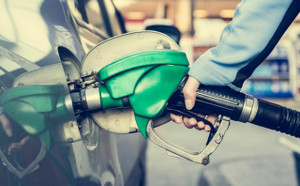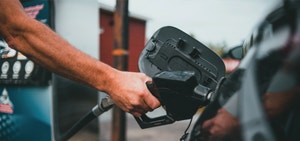5 Litres of information on fuel economy
By Kijiji Autos
Gas prices may be lower than they have been over the past four years, but they still remain high compared with the cost of oil. Considering the ongoing expense and need for fuel, litres per 100 kilometres represents an important consideration when purchasing a new or used vehicle.
You may not be able to control how much oil companies charge for gas, but you can decide to sacrifice a little speed or style for fuel efficiency. Given advancements in technology, you might not have to even give up much! Here’s how you can use the latest data and science to keep money in your pocket when selecting the right set of wheels.
Use a Fuel Cost Comparison Calculator
National Resources Canada (NRCan) offers a tool that lets you select multiple makes and models to see which car might best fit your needs. In an advanced search, you can factor in the number of kilometres you travel in a year, in addition to breaking down the percentage of driving you do in the city versus the highway. It should at least help remove the sticker shock at year end when you see how much you’ve spent on gas.
Don’t Dismiss Transmissions
The type of transmission in a vehicle could help positively impact its fuel economy. Compared with a 2007 car with an automatic transmission, today’s cars feature a dual clutch transmission, which can reduce fuel consumption by up to 9 percent. GM Canada is one manufacturer that sites advanced transmission technologies for “substantial increases” in fuel economy.
Consider the Most Fuel-Efficient Vehicle
For 2016, NRCan recognizes several vehicles that have the lowest combined fuel consumption rating. Calculating a mix of commuting styles – 55 percent city and 45 percent highway – the site offers recommendations for a number of car classes. Toyota claims three spots on the list: the Prius c (compact), Prius (midsize), and Prius v (midsize station wagon). Honda and Ford are also featured.
Remember to Check Your Tires
It’s not just a flat tire that can ruin your day. Underinflated tires should be a pressing concern given their ability to influence just how far your car gets on a full tank. In fact, tires underinflated by 8 pounds per square (psi) can increase the car’s fuel consumption by 4 percent. (This may be the only time when it’s good to be full of hot air.) Check those tires once a month to ensure you’re not burning extra fuel over a little psi.
Declutter the Trunk
If you picture the back seat or trunk of your car right now, does it resemble a storage locker? Every 25 kilograms of weight in the car increases fuel consumption by about 1 percent. Maybe it’s time to start sorting through those backseat treasures and trunk keepsakes and pony up – the less weight in your vehicle, the less fuel your engine will need.
You must always consider fuel consumption and efficiency when purchasing a new or used car because:
- It’s a way to protect your wallet and enjoy a healthier relationship with your car
- There is the importance of researching if that new car is a greedy gas guzzler
- Several steps to increasing fuel economy involve checking those tires regularly and clearing out your trunk of unnecessary junk
Easily find your next ride on Kijiji Autos
Search nowHow Long Can a Car Sit Unused?
How long can a car be left without starting it? Keep reading to explore everything you need to know about unused cars.Costs of Installing an Electric Car (EV) Charging Station in Canada
Installing a home EV charger can come with additional fees beyond purchase and installation. Here's a list of factors that can affect the price of a home EV charger.Toronto to Calgary Road Trip: Routes & Tips
Planning on driving from Toronto to Calgary? Here are some routes and tips to help you along the way.Flat Tire vs Blowout: What's the Difference & What Should You Do?
The main difference between a flat tire and a blowout is that a blowout often feels like an explosion has occurred underneath your vehicle. Blowouts can cause sudden and drastic changes to the handling of your vehicle and can lead to minor or even serious accidents.7 items you can fit in an SUV: TVs, mattresses and more
Discover seven common items that fit in an SUV below.Tips to help protect your vehicle and budget for car repairs
When shopping for your next vehicle, it's always a good idea to keep hidden costs in mind. Before you buy, let's look at how much it can cost to maintain a car in Canada, how much you could budget for annual maintenance and repairs, and how to help protect your car against damage and depreciationThe top three best paint protection options for your vehicle
Buying a new vehicle is a great experience. Nothing beats hitting the road in a car you bought fresh off the lot. However, as fun as it is to finally get behind the wheel of your new ride, it's important to take your time through the process.What is the value of undercoat protection on your vehicle?
When you buy a new vehicle, protecting it so that it lasts as long as possible is definitely top of mind, whether that's through security upgrades or an extra coat of paint. But how often do you consider the care and safety of your vehicle’s undercarriage?Financial guide: post-pandemic car shopping and gas price hacks
With populations locked down and international borders closed the global supply chain has been disrupted on a massive scale, pushing up inflation around the world and raising the cost of everything that people need to get back to normal. Here are a few tips you can use to grab the vehicle you want without breaking the bank.10 tips to help make the road a better and happier place
We have all, at some point, been responsible for making the roadways stressful in one way or another. Alternatively, we are all equally capable of making the road a happier place. Let’s explore 10 unique ways we can help make the driving experience better again, for everyone's sake.








